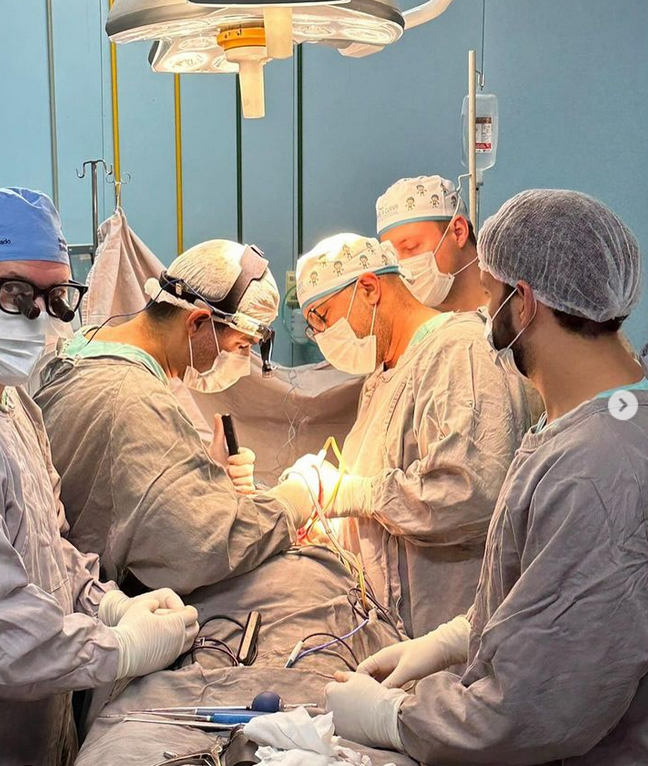Endoscopic spine surgery (ESS) is a minimally invasive surgical technique that has gained significant attention in recent years for its potential benefits over traditional open spine surgery. Dr. John Asghar, a renowned spine surgeon, provides valuable insights into the pros and cons of this innovative approach. This article explores the benefits and risks of ESS to help patients make informed decisions about their treatment options.

Understanding Endoscopic Spine Surgery
Endoscopic spine surgery involves using a small endoscope—a thin, flexible tube with a camera and light at the end—to access the spine through tiny incisions. Surgeons use this tool to visualize the surgical area and perform the necessary procedures with specialized instruments. ESS is typically used to treat conditions such as herniated discs, spinal stenosis, and other degenerative spine diseases.
Benefits of Endoscopic Spine Surgery
1. Minimally Invasive Approach
One of the most significant advantages of ESS is its minimally invasive nature. Unlike traditional open spine surgery, which requires large incisions and significant muscle dissection, ESS involves small incisions, usually less than an inch long. This approach results in less tissue damage, reduced blood loss, and minimal scarring.
2. Faster Recovery Time
Patients undergoing ESS generally experience faster recovery times compared to those who have open spine surgery. The reduced trauma to muscles and tissues allows for quicker healing, enabling patients to return to their normal activities sooner. Many patients can go home the same day or within 24 hours of the procedure, significantly reducing hospital stay and associated costs.
3. Lower Risk of Infection
The smaller incisions used in ESS reduce the risk of postoperative infections. Infections are a common concern with any surgical procedure, but the minimal exposure of internal tissues in ESS minimizes this risk. Additionally, the use of advanced sterilization techniques and equipment further enhances patient safety.
4. Less Postoperative Pain
Patients who undergo ESS typically experience less postoperative pain compared to those who have open spine surgery. The smaller incisions and reduced tissue damage result in less pain and discomfort during the recovery period. This often translates to a decreased need for pain medication, reducing the risk of dependency and side effects associated with painkillers.
5. Improved Cosmetic Outcomes
The small incisions used in ESS lead to better cosmetic outcomes. Patients are left with minimal scarring, which can be particularly important for those concerned about the aesthetic impact of surgery. The tiny scars are often barely noticeable, allowing patients to feel more confident about their appearance post-surgery.
Risks of Endoscopic Spine Surgery
1. Limited Visibility and Access
While the endoscopic approach offers many advantages, it also has limitations. The small incisions and specialized instruments can restrict the surgeon’s visibility and access to certain areas of the spine. This limitation may make it challenging to address complex or extensive spinal issues effectively. In some cases, surgeons may need to convert to open surgery if they encounter difficulties during the procedure.
2. Learning Curve for Surgeons
ESS requires specialized training and experience. Not all spine surgeons are proficient in this technique, and there is a learning curve associated with mastering the necessary skills. Patients must ensure their chosen surgeon has the appropriate training and experience to perform ESS safely and effectively.
3. Risk of Nerve Damage
As with any spine surgery, there is a risk of nerve damage during ESS. The delicate nature of spinal nerves means that even minor errors can have significant consequences. Although the risk is relatively low, patients should be aware of the potential for nerve injury, which could result in pain, numbness, or weakness.
4. Incomplete Resolution of Symptoms
In some cases, ESS may not fully resolve the patient’s symptoms. The minimally invasive approach may not always allow for the comprehensive treatment of certain spinal conditions. Patients should have realistic expectations and understand that additional treatments or procedures may be necessary to achieve the desired outcome.
5. Potential for Reoperation
While ESS can be highly effective, there is a possibility that patients may require additional surgeries in the future. This need for reoperation can arise if the initial procedure does not fully address the underlying issue or if new spinal problems develop over time. Patients should discuss this risk with their surgeon and weigh it against the benefits of the minimally invasive approach.
Making an Informed Decision
Deciding whether to undergo endoscopic spine surgery requires careful consideration of the benefits and risks. Dr. John Asghar emphasizes the importance of thorough consultation with a qualified spine surgeon to determine the most appropriate treatment plan for each patient. Factors such as the patient’s medical history, the severity of their condition, and their overall health should be taken into account.
Patients should ask their surgeon about the expected outcomes, potential complications, and alternative treatment options. Understanding the full scope of the procedure and its implications will help patients make informed decisions and set realistic expectations for their recovery.
Conclusion
Endoscopic spine surgery offers numerous benefits, including a minimally invasive approach, faster recovery times, lower infection risk, less postoperative pain, and improved cosmetic outcomes. However, it also has its risks, such as limited visibility and access, a learning curve for surgeons, the risk of nerve damage, incomplete resolution of symptoms, and the potential for reoperation.
By carefully weighing these pros and cons and consulting with an experienced spine surgeon like Dr. John Asghar, patients can make informed decisions about their treatment options. Endoscopic spine surgery may be a viable and effective solution for many individuals suffering from spinal conditions, but it is essential to approach it with a clear understanding of its benefits and limitations.


